I thought I’d share various links related to astronomy that you may find useful. While there are plenty more, I’m sharing the ones I use and like below.
Several young visitors to my site have also offered links to other helpful sites that I wanted to post here as well. Thanks to Ava for this link for backyard astronomy basics. Trevor found this site with astronomy games for kids, and Layla sent me this set of links on amateur astronomy at home. Thanks to Michelle and her campers for this link to an article on constellation mythology, which links to a number of different sites with more details on specific constellations. Girl Scout Hannah found this very cool infographic on the 44 closest stars (within 15 light years) and how they compare to our own Sun. Thanks to her troop leader Amanda for forwarding that on. Young Amelia found this nice introduction with a great set of helpful links, so thanks to her and her teacher, Carol, for forwarding this on. Mrs. Stagle of the Hampton Public Library in New Hampshire, passed along this beginners astronomy guide that her student volunteer Amanda found. Student volunteer Julie at the Hastings Recreation Center in Minnesota, had her teacher Mrs. Echevarria forward this fun reading she found, about The Seasons, Solstices, and Equinoxes. Payton and her mother, Michelle, provided this Sleeping Under Stars & Planets link which contains many more links to different astronomical resources.
I’d also love to hear from you just to know what you think of the site or if you have any good links you’d like to share as well. I can’t always get around to posting updates quickly, but feel free to leave a note in the comments section below. I’ve also started a list of links that others have provided to their own websites, etc. Unfortunately, I’ve also started receiving obviously robo-generated messages (identical messages from different people with fake return e-mail addresses), so you may have to try a little harder to convince me you’re legit. I also don’t make any claims as to the validity or safety of any of the sites that are submitted to me, so use your own discretion when visiting any of these sites.
| Link | Submitted By |
| starlust.org | Tom Urbain |
| Astronomy in Media – A unique look at related movies and movie history for something completely different. | Hailey Tanner, Outreach Coordinator, Octane Seating |
Astronomical Community and Outreach
First off, anyone interested in this hobby should really check out Cloudy Nights for great forums with a great online community to help you learn more or just hang out. They also have a good classifieds section.
For those in Central Texas, you may want to check out the Austin Astronomical Society. They have an observatory and dark sky site out at Canyon of the Eagles north of Lake Buchanan near Burnet, TX. They have monthly public and private star parties as well as various outreach efforts throughout the year.
Another local organization I spent some time working with at their start has become the Texas Museum of Science and Technology. Formerly the Austin Planetarium, the group has had to scale back from their plans to develop a facility near the Bob Bullock Texas State History Museum and the University of Texas on the north side of downtown Austin. Instead they had moved into a temporary facility just down the road from where I work in Cedar Park, TX; a northern suburb of Austin. I hosted a star party there every Friday night up to their closing in early 2018. Hopefully the dream for a permanent location isn’t dead, but I haven’t heard anything lately.
Technical Websites
While I don’t typically have much time to spend on these, and more often than not I completely forget to check them out, here are a couple of links that I see commonly sent around.
If you click on my clear sky chart on my home page, you’ll end up here, but Clear Dark Sky is a very useful astronomy tool for predicting your changes for a good night of observing. Just find a site near you for a pretty impressive prediction of the next 24 hours or so of observing conditions. You’ll find that not only is the weatherman seldom right, but what “clear” or “cloudy” means to a weatherman isn’t the same as what it means to an astronomer! While it’s often more an exercise in frustration, I do also reference The Weather Channel‘s website, as well as Weather Underground. While the latter is generally less useful for forecasting, it does include a huge range of home weather stations so that you can often find local area information near where you want to observe.
For a different kind of weather, check out spaceweather.com. You’ll get details on solar flares and other events in our solar system, as well as associated pictures and news.
Of course NASA has all sorts of resources, and while personally I’m pretty disappointed in the state of our space program (to quote Jerry Pournelle, “When I saw the first man set foot on the moon, I never thought I’d live to see the last!”), a pretty popular link is to their Astronomy Picture of the Day. This includes a range of professional and very good amateur pictures. Who knows? One day I might send them something to post.
Telescope Equipment
So if you’ve made it to this point, you’re probably wondering where’s the best place to pick up your own telescope. One of the best places I’ve found to get a decent telescope for a great price is on Craig’s List. Doing so takes a bit of work, and you have to know what you’re doing, but what you’re looking for is the person who bought a telescope, never figured out how to use it (and basically never used it, keeping it boxed up in new condition) but just wants to get rid of it. You’ll want to stay away from those that never used it and are hoping to get their money back (although higher end astronomy equipment generally holds its value quite well) as well as those that never took care of it. Missing eyepieces, dirty optics, and damaged mounts are common problems you don’t want to deal with.
For a bit more reliable used equipment market, I’ll send you back to Cloudy Nights for their excellent free Classifieds section. I stay away from “Those other guys” as Astromart is commonly derogatorily referred to, after they decided my “Lifetime Membership” no longer counted and I needed to start paying for a subscription to post or view. When there’s a free public classifieds section on an excellent community forum like Cloudy Nights, why waste your money?
If you’re looking for new, there are plenty of online stores but if you’re lucky enough to live in a location with a brick and mortar store, be sure to give them a look. Most of us (including yours truly) aren’t that lucky anymore. For the most part, telescopes and other major components are generally price locked by the manufacturer with all vendors charging the same price. So your best bet is to look for a manufacturer backed sale and find the ones with free shipping or other bonuses. For accessories, there are more alternatives and some better prices available for more “generic” options.
For the latter, one of my favorites these days is Agena AstroProducts. I’ve been quite happy with their Blue Fireball and GSO products for adapter rings, focusers, etc. I really love my Williams Optics binoviewer I bought from them as well. They continue to add more mainstream products including a wide line of telescopes, etc. and Manish is a great guy to work with. They also typically have free US shipping on everything.
Of course I have to give Astronomics a plug here. They’ve created and hosted Cloudy Nights for many years as a great service to the astronomy community, at a considerable cost to themselves. If you’ve followed my directions to go to CN at the start of this post, you should have already found them, but if not, now you know. Michael and the crew there are great, and if you’re a member of CN (which is free) you can get a discount on what you buy from them. I do wish they offered more free shipping, but you can’t have everything. If you have a chance to go anywhere near Oklahoma City, it’s worth the trip to their brick and mortar store in Norman, OK. The array of telescopes they had on display when I was there last was very impressive. I realize some of us might not want to get that close to the home of the Sooners, but it’s worth the visit. And while you’re in the area you can stop at the new Chuy’s Tex-Mex they built in the area recently. That’s of course if you can’t make it to the original in Austin or any of their other locations.
I used to buy a LOT of stuff from telescopes.com, who also had some of the best discounts and free shipping. However, ever since Hayneedle (NetShops at the time) bought them, it has become a growing exercise in frustration, where they’re constantly sending me discount codes that don’t apply to anything on the telescopes.com website. I still buy from them occasionally if I can’t get it for the same price elsewhere, but it’s unfortunate to see a group of great people turned into a corporate cog.
Not to confuse them with telescope.com, which is the website for Orion Telescopes and Binoculars. Orion is an interesting company, who OEMs a lot of products under their own name. They have some really great stuff mixed in with some dismal failures. Since they end up putting their name on most of it, that can be hard on a reputation. Generally you’ll see some very good scopes (as well as traditional name brands) and some unique accessories that may or may not be there next year. They do still have some brick and mortar stores on the West Coast and I stop by the Cupertino location regularly when I’m there, usually to rummage through the clearance bin. I haven’t bought online from them in a while, but they traditionally run occasional free shipping deals, etc. Christmas is often a good time to find unique deals there.
You’ll find a number of other major telescope/binocular vendors, some still associated with brick and mortar locations. You’re better off with these, and better yet if you can visit a store. For lower end beginner scopes, you can also try Fry’s Electronics or other box stores, but don’t count on a lot of technical knowledge or support. You may fare better at some of the camera stores that also carry a telescope or two. And as much as I like Amazon (and want to see my stock do well), most of what they have are storefronts for other online vendors you can go to directly (including telescopes.com, Orion, Adorama, etc.) without the $5 or so that Amazon typically tacks on top of the price. You’ll also find eBay store fronts for some of the main online retailers that may be the same price as their main site, but sometimes more, sometimes less. There are also a few eBay only stores that have various accessories, etc. as well as plenty of things that can be re-purposed as astronomy accessories. However, I don’t think I’d buy used off eBay though; you’re likely to end up with the second kind of results I mentioned for Craig’s List!
Sky Mapping Software
Many references will mention using star charts to learn the sky, and while traditional printed charts are still probably better for preserving your dark adapted vision at night, I’d be remiss if I didn’t mention the wide range of planetarium software available today for your PC, phone, or tablet. You’ll find a number of them in your app store, some of which are free and others with minor to significant prices. I’ll start with Stellarium, which is a free, open source program available for PCs, Linux, and Macs. There’s a paid app that ports Stellarium to Android and iOS, although I got mine free from the Amazon App Store years ago.
There are various other apps out there although I can only comment on the Android ones. I use another one I got free from Amazon called Star Chart that’s decent. There are some other apps for detecting the ISS and satellites like ISS Detector Pro, although that one’s somewhat out of date. Lately I’ve been getting a kick out of ISS HD Live, which will show you where the International Space Station is now and provide live video feeds from HD cameras on the outside of the ISS. It will also pop up alerts for launches, dockings, space walks, and other special events.
Simulation Curriculum makes the Starry Night software for PC and Mac, and SkySafari for iOS and Android. They’re pricey packages, but have large catalogs and are generally excellent programs. Orion Telescopes used to include a lite version of Starry Night with telescope purchases and you might be able to find a free version that way. Celestron used to include a planetarium software with theirs as well, but it has been out of date for a long time and might not run on your Windows 10 PC. They’ve been working with other vendors lately so may have something better.
For someone who plans to do a lot of imaging or scheduling a star party viewing, etc., a planner is a must. I’ve seen some online tools (try a Google search) but the premier tool for doing that is SkyTools. Again, it’s not cheap, but it really is a useful tool. I bought SkyTools 3 through my local astronomy club chapter as a one time group buy and saved a bit that way. I probably would never have found it if it wasn’t for them suggesting the purchase.
Conclusion
So I hope this was helpful for you. I figured a bit of detail was better than just a blank list of links. Best of luck in whatever you’re looking for!


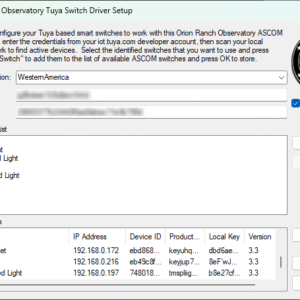
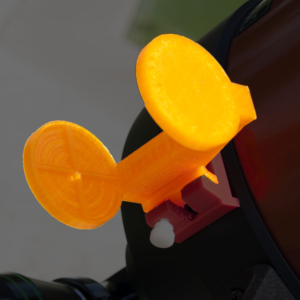

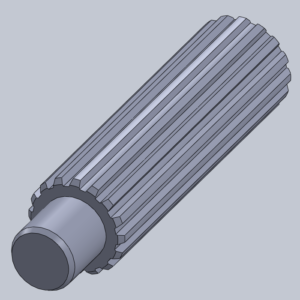

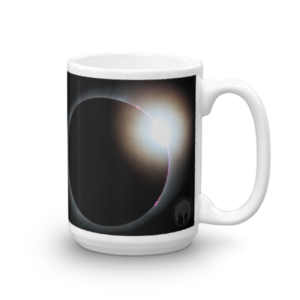


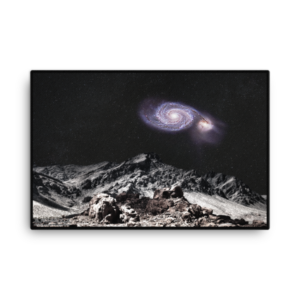

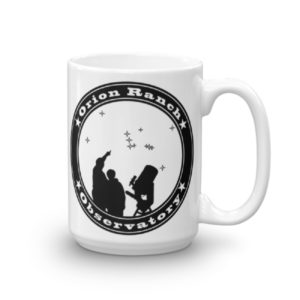
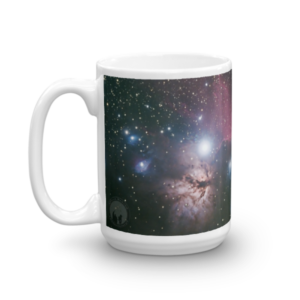

2 Responses to Links of Interest